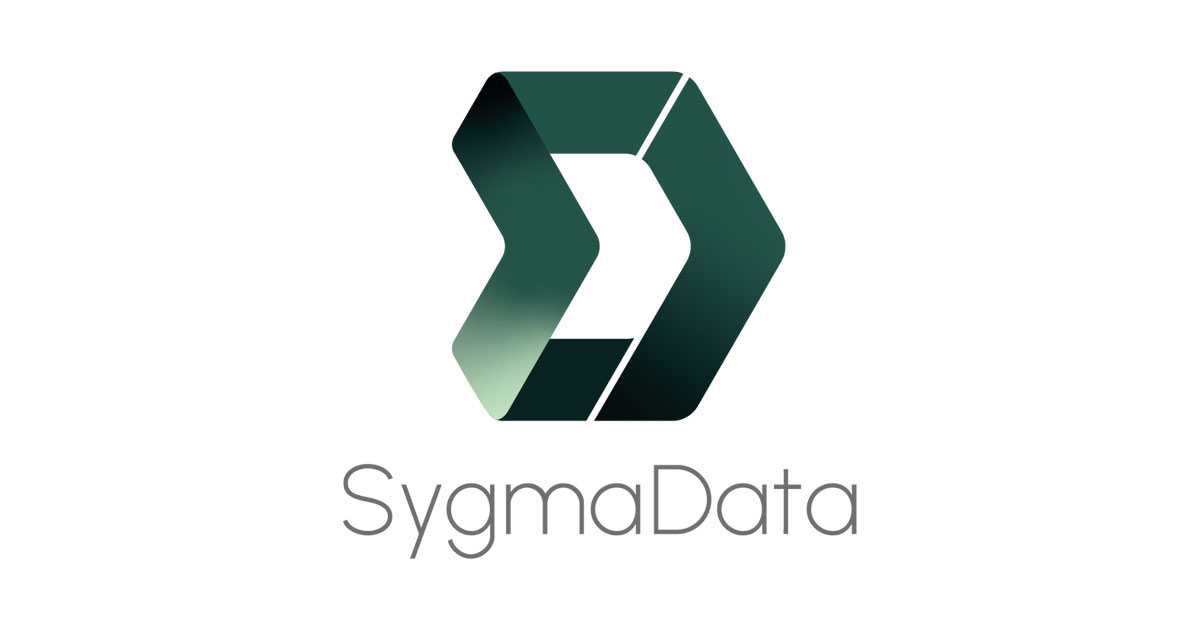Download the PDF document here: The challenges of data management in grid balance
The challenges of data management in grid balance
Discover how data management drives grid stability in modern energy systems. Learn about data types, key challenges, solutions, and emerging technologies shaping the future of smart grid balance.
Table of Contents
Types of Data in Grid Balance. 5
- Real-Time Monitoring Data. 5
- Predictive and Forecasting Data. 5
- Historical Performance Data. 5
- Cybersecurity Data. 5
- Data Quality Metrics. 6
Real-time Processing Requirements. 7
Solutions to Address Challenges. 8
Best Practices in Data Management 11
Third-Party Risk Management 11
Energy Optimization and Demand Response. 12
Successful Implementations in Grid Modernization. 13
Ongoing Challenges and Future Directions. 13
Artificial Intelligence and Machine Learning. 14
Supervised Learning Applications. 14
Sustainable Products and Services. 14
summary
Data management in the context of grid balance is a critical component of modern energy systems, essential for maintaining stability and efficiency as grids evolve into smarter, more adaptable frameworks. This field encompasses various data types, including real-time monitoring, predictive forecasting, historical performance metrics, and cybersecurity information, all of which are vital for informed decision-making by utility operators. The integration of advanced technologies and data analytics facilitates better management of these data types, yet it also introduces significant challenges that must be addressed to optimize grid operations and ensure reliability.
Notably, the challenges of data management in grid balance include issues related to data quality, the need for real-time processing, and the existence of data silos that hinder effective communication across organizations. Studies indicate that poor data quality can significantly impact revenue and operational effectiveness, while the volume of data generated by smart grids often overwhelms staff, detracting from strategic decision-making efforts. Additionally, organizations face substantial costs in upgrading legacy systems, which further complicates their ability to manage data effectively and respond to the demands of modern energy distribution.
The ongoing evolution of the energy landscape, driven by increasing integration of renewable sources and the rise of electric vehicles, underscores the importance of addressing these challenges. Grid operators must implement robust data management practices and technologies to improve operational efficiency, enhance cybersecurity measures, and streamline data access. By adopting best practices and innovative solutions, utilities can navigate the complexities of data management and bolster their efforts to achieve a balanced and resilient energy grid.
Overall, the significance of data management in grid balance cannot be overstated, as it plays a pivotal role in the transition to more sustainable energy systems. As utilities confront an ever-evolving set of challenges and opportunities, understanding and effectively managing the intricacies of data will be crucial for future success in the energy sector.
Types of Data in Grid Balance
Data management plays a crucial role in maintaining balance within the grid system, particularly as the legacy grid evolves into a more intelligent and adaptable framework. Various types of data are essential for effective grid management, and understanding these categories can enhance decision-making processes for utilities.
1. Real-Time Monitoring Data
Real-time data is pivotal for monitoring energy consumption and grid performance. Advanced sensors and smart meters continuously collect data on power flows, equipment status, and various operational parameters[1][2]. This data allows grid operators to maintain an up-to-date view of the grid’s status, enabling them to detect anomalies and adjust system operations accordingly. Enhanced real-time communication ensures that operators can make informed decisions to maintain stability and reliability within the grid[3][4].
2. Predictive and Forecasting Data
Predictive data encompasses supply and demand forecasts, which are critical for integrating new technologies like electric vehicles and renewable energy sources into the grid[5]. This type of data also includes climate and weather forecasts that influence the generation capacity of intermittent sources such as wind and solar power. By anticipating these factors, grid operators can better plan for and optimize energy distribution, thereby enhancing grid resilience[5].
3. Historical Performance Data
Historical data offers insights into past grid performance and helps identify trends over time. This data can include information on asset failure rates, operational efficiency, and previous energy demand patterns. Understanding historical performance is essential for assessing the aging infrastructure of the grid and planning maintenance and upgrades to ensure long-term reliability[6][5].
4. Cybersecurity Data
As the integration of technology into grid systems increases, so do the cybersecurity risks. Data related to cybersecurity encompasses threats that can compromise the integrity and availability of grid operations, such as malware attacks and vulnerabilities in software systems[4][7]. Managing this data is essential to protect sensitive information and maintain trust in grid management systems.
5. Data Quality Metrics
Data quality metrics are crucial for assessing the reliability and accuracy of the data being used. Poor data quality can severely impact operational effectiveness and revenue, with studies indicating that many businesses experience significant revenue loss due to data quality issues[8][9]. Therefore, ensuring high-quality data is vital for successful grid management and operational strategy.
Key Challenges
Managing data in the context of grid balance involves several critical challenges that can significantly affect operational efficiency and decision-making.
Data Quality Issues
Data quality problems are prevalent in many organizations, particularly those that rely heavily on data for their strategic and operational activities. A survey from Wakefield Research indicates that over half of businesses reported that 25% or more of their revenue was impacted by data quality issues, highlighting the urgency for improved data management practices[10][9]. Furthermore, the average percentage of affected revenue increased from 26% in 2022 to 31% in 2023, underscoring that addressing data quality is essential for maintaining a competitive edge[10][9].
Real-time Processing Requirements
Real-time processing is critical in sectors like finance, healthcare, and e-commerce, where immediate data processing can drastically influence decision-making[11]. However, the challenge lies in the inconsistent flow of real-time data, which can be difficult to predict and manage. This unpredictability complicates the operational landscape and makes it challenging to maintain an effective grid balance[12].
Data Silos
Legacy systems often create data silos, hindering access to crucial information across the organization. This lack of integration can severely impact collaboration and decision-making processes, ultimately affecting grid balance management[13]. Organizations must prioritize breaking down these silos to enable seamless data sharing and enhance overall efficiency.
High Costs of Integration
The costs associated with upgrading or replacing legacy systems can be substantial, making it necessary for organizations to carefully weigh these expenses against the potential benefits of improved data integration[13]. Rapid Innovation offers strategies to minimize disruption while maximizing return on investment, but navigating these financial challenges remains a significant hurdle for many businesses.
Training Requirements
As organizations adopt new technologies, there is often a need for comprehensive training to ensure that employees are equipped to handle both legacy and new systems effectively. Insufficient training can lead to temporary productivity losses, further complicating efforts to achieve optimal grid balance[13].
Volume of Data
The overwhelming volume of data generated by smart grids presents another challenge. Business users and data analysts frequently spend up to 80% of their time searching for and preparing data, which detracts from their ability to focus on strategic decision-making[10][9]. Implementing effective data governance and management strategies is vital for streamlining data access and improving operational efficiency.
Solutions to Address Challenges
To mitigate these challenges, organizations must adopt a systematic approach to data management. This includes eliminating duplicate entries, investing in employee training, and utilizing robust data governance practices to ensure that valuable data is identified and managed effectively[14]. Additionally, leveraging advanced data management platforms can help streamline processes and enhance overall data quality, making it easier to maintain grid balance and support informed decision-making[14].
Technological Solutions
Managing the influx of real-time data in smart grids presents significant challenges, necessitating effective technological solutions for storage, analysis, and utilization. Rapid Innovation emphasizes the integration of advanced software tools and algorithms that extract valuable insights and patterns, enabling automation, optimization, and predictive capabilities essential for grid management[15][16].
Data Management Techniques
To address these challenges, various data management techniques are employed. These include cloud computing, which provides the necessary computing power for extensive data analytics, and machine learning models that enhance decision-making by automating processes and improving efficiency[15][17]. Supervised learning, in particular, is widely utilized for tasks such as image recognition and spam detection, which demonstrate the potential of machine learning in optimizing operations within smart grids[18][19].
Cybersecurity Measures
Given the sensitive nature of data in smart grids, implementing robust cybersecurity measures is crucial to protect information from potential breaches. Establishing comprehensive standards and protocols for data formatting, processing, and exchange is essential to ensure both security and compliance with regulations such as GDPR[15][20][21]. This multifaceted approach enhances the reliability and security of systems, allowing organizations to remain resilient against various challenges that may arise in data management.
Tools for Data Management
Numerous tools are available to assist in managing data requirements effectively.
These include data warehousing solutions like Snowflake and Redshift, ETL (Extract, Transform, Load) tools such as Apache NiFi and Talend, and data visualization tools including Tableau and Power BI. Utilizing these tools aids in maintaining data quality, which is critical for accurate insights and informed decision-making[22][21][17].
Innovative Technologies
Rapid Innovation leverages cutting-edge technologies such as artificial intelligence and blockchain to enhance system reliability and security. These technologies not only facilitate data management but also empower organizations to achieve greater return on investment (ROI) by minimizing risks and maximizing operational efficiency[16][23][24]. The deployment of IoT devices, for instance, supports smart homes and healthcare monitoring by enabling real-time data collection and management, further illustrating the breadth of technological solutions available[25][21].
Best Practices in Data Management
Effective data management is crucial for ensuring the stability and functionality of smart grid systems. Implementing best practices in data management can help organizations streamline operations, reduce risks, and enhance compliance with regulatory standards.
Data Minimization
One of the core principles of effective data management is data minimization, which involves collecting only the data necessary for specific purposes. This practice not only reduces the risk of exposure to sensitive information but also enhances operational efficiency. Organizations are encouraged to regularly review their data collection practices to ensure alignment with this principle and eliminate unnecessary data storage [26][27].
Third-Party Risk Management
Sharing data with third-party vendors can introduce significant privacy risks. It is essential for organizations to conduct due diligence on these third parties to ensure they adhere to strict data privacy standards, especially when utilizing managed data security services. Establishing clear agreements and continuous monitoring of third-party compliance can help mitigate potential risks associated with data sharing [26][27].
Data Encryption
Data encryption plays a vital role in protecting sensitive information from unauthorized access. By encrypting data, organizations can safeguard it from potential breaches, making it significantly more challenging for attackers to decipher intercepted information. This practice is crucial for maintaining data integrity and confidentiality in smart grid systems [26][27].
Regular Framework Reviews
Organizations should establish and use comprehensive standards and guidelines to ensure a robust approach to data management. Regularly reviewing and updating the data management framework is essential to reflect changes in the risk environment and technological advancements. Documentation of the risk assessment process and outcomes supports accountability and fosters continuous improvement in data management practices [28][16].
Compliance Management
Staying updated with evolving regulations and standards for data management and cybersecurity in smart grids is essential. Utilizing compliance management tools can assist organizations in ensuring adherence to these requirements. This proactive approach not only helps in mitigating risks but also promotes a culture of compliance within the organization [12].
Energy Optimization and Demand Response
Implementing energy optimization software can enhance grid efficiency by aligning data center loads with real-time energy availability. Developing demand response strategies to manage energy consumption during peak periods is another best practice that contributes to overall grid stability and efficiency [12].
By adopting these best practices, organizations can significantly enhance their data management capabilities, ultimately contributing to the effective balancing of energy consumption and grid efficiency in smart grid systems.
Case Studies
Case studies provide valuable insights into real-world applications of data management theories and practices, particularly in the context of grid balance. They illustrate the implementation of strategies, the challenges faced, and the outcomes achieved. This section explores successful implementations and the lessons learned from various case studies in the field of energy management and data integration.
Successful Implementations in Grid Modernization
One notable case study involves the integration of IoT with Big Data Analytics to develop smart society solutions. This initiative showcased how technology can enhance decision-making processes and improve efficiency in energy management systems[5]. By fostering cross-functional collaboration among departments, insights and best practices were shared, leading to more comprehensive solutions and enhancements in grid performance[29][30]. Integration Projects
A significant project aimed at modernizing the grid involved the establishment of an IEC CIM based Network Connectivity Data Model. This model supported the integration between Geographic Information Systems (GIS) and the Advanced Distribution Management System (ADMS), addressing various use cases and integration requirements[28]. The VP of Strategy and Solutions at Xtensible, Michael Covarrubias, emphasized the importance of documenting processes and data requirements, stating that this foundational work supports the overall modernization efforts of the grid[31].
Ongoing Challenges and Future Directions
Despite the progress, utilities continue to evaluate the future of the grid, identifying technological gaps between current operations and future needs. Key focus areas include safety, reliability, and providing customers greater control over their energy consumption[32]. Regular reviews of processes and performance metrics are crucial to ensure that improvement initiatives remain effective and aligned with business goals[20][33]. Recognition and reward systems for employees who contribute to continuous improvement efforts have also been noted as effective motivators for engagement in these initiatives[34].
Future Trends
The future of data management in grid balance is poised to evolve significantly, influenced by technological advancements and changing energy consumption patterns. Several key trends are emerging that are expected to shape the landscape of smart grids and their operational efficiencies.
Artificial Intelligence and Machine Learning
Artificial intelligence (AI) and machine learning are increasingly being integrated into smart grid systems to enhance decision-making and automate data processing tasks. These technologies can analyze vast amounts of data generated by the grid, allowing for real-time adjustments to maintain balance and efficiency. Companies that effectively leverage AI and machine learning can achieve significant improvements in operational performance and resource allocation[35][36].
Supervised Learning Applications
One notable application of machine learning in grid management is supervised learning, which utilizes labeled datasets to train models for accurate predictions. This approach is instrumental in various areas, such as predictive maintenance, load forecasting, and anomaly detection within the grid system. By employing supervised learning, utilities can proactively address potential issues before they escalate, thereby maintaining stability and reducing downtime[36].
Remote Work Solutions
The shift towards remote work has accelerated the development of collaborative tools that facilitate the management of data across geographically dispersed teams. As more professionals work from home, the need for secure and efficient data management solutions becomes critical. Innovative platforms that support remote collaboration will likely play a pivotal role in managing the complexities of smart grid operations, especially in ensuring that all stakeholders have access to the data they need to make informed decisions[37][28].
Sustainable Products and Services
As consumer awareness of environmental issues grows, there is a heightened demand for sustainable energy solutions. Companies that focus on sustainable products and services are likely to gain a competitive edge in the energy sector. This trend is pushing utilities to adopt data management practices that not only optimize grid performance but also minimize environmental impact. Emphasizing sustainability in grid management can help foster customer loyalty and compliance with regulatory requirements[38][39].
References
[1]: The Role Of Data Centers In Smart Grid Technology – DataBank
[2]: Challenges in Digitalization of Electricity Grids – Aktif Elektroteknik [3]: Standards Compliance for Power Grids: Common Challenges …
[4]: How utilities can navigate regulatory compliance challenges
[5]: Impacts of digitalization on smart grids, renewable energy, and …
[6]: Data Management in Smart Grids | Encyclopedia MDPI
[7]: Grid Balancing | Next Kraftwerke.com
[8]: (PDF) Big Data Analytics in Smart Grids: State-of-the-Art, Challenges …
[9]: The impact of datacenter load regulation on the stability of integrated …
[10]: Innovation for Smart Grids: 4 Emerging Trends in Data Management
[11]: U.S. Electricity Grid & Markets | US EPA
[12]: Top Challenges of Using Real-Time Data – RTInsights
[13]: About the EIA-930 data
[14]: What is Grid Regulation and How Does Compliance Affect You?
[15]: The Future of Energy: Exploring the Advantages of Smart Grids
[16]: Grid balancing: Yet another great contribution from a data center
[17]: Adaptive Energy Management of Big Data Analytics in Smart Grids
[18]: Optimizing Energy Grids with Data: The Key to a Greener Future
[19]: U.S. data centres and the risk to grid stability – JKempEnergy.com
[20]: The opportunities and challenges of data center growth
[21]: Electrical grid: Balancing the load with so much pv around. New …
[22]: Eight Critical Reliability Challenges NERC Is Confronting for Grid …
[23]: Overcoming challenges with grid digitalisation, DER management
[24]: Big Data management in smart grid: concepts, requirements and …
[25]: Balancing Authority Data Reformatted (Dataset) – OSTI.gov
[26]: The Importance of Real-Time Data Communication in Smart Grids
[27]: Smart grids – IEA
[28]: Digitalization of power distribution grids: Barrier analysis, ranking …
[29]: Unleashing the benefits of smart grids by overcoming the challenges …
[30]: The Role of Control Systems in Smart Grid Technology
[31]: Addressing Data Security Challenges in Legacy Systems
[32]: [PDF] BALANCING SMART GRID DATA AND CONSUMER PRIVACY
[33]: A market framework for grid balancing support through imbalances …
[34]: Top Challenges and Solutions in Smart Grid Technology
[35]: Addressing the Challenges of Real-Time Data Sharing in IoT
[36]: Smart Grids: Everything You Need to Know – Greenly
[37]: [PDF] Addressing challenges with real-time distributed data shared across …
[38]: The Essential Guide to Smart Grids: Benefits and Challenges – ELEKS
[39]: Renewable energy and grid stability: modern infrastructure … – PVcase



